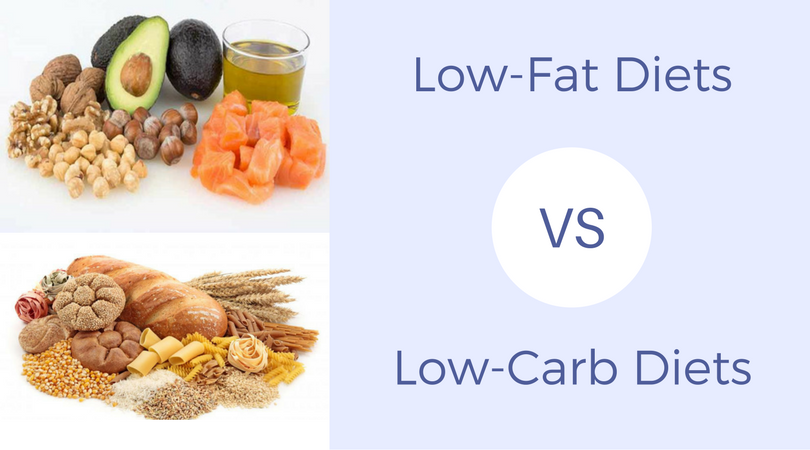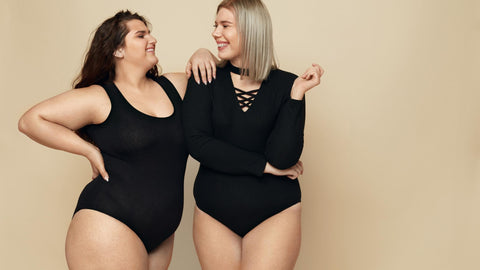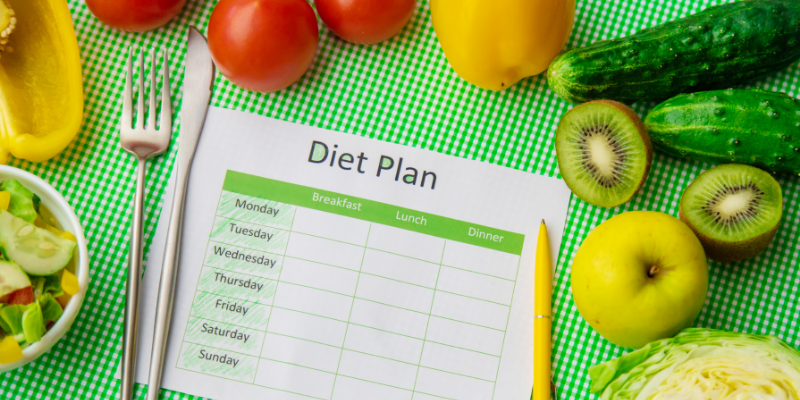
A'moderate' diet allows for a variety of foods. You can eat milk or dairy substitutes, nuts, seeds, meat, poultry and refined carbs in moderation. This diet is primarily vegetarian/vegan but you can also eat other foods.
Metabolic typing
Metabolic typing is a pseudoscience that claims that each person has a unique metabolism and needs a different proportion of different macromolecules in their diet. A certain proportion of macromolecules could be good for someone's health. But, it may be dangerous for someone else.
A metabolic typing diet chart can help determine the right macronutrient ratios for your body. For instance, some people benefit more from eating a higher percentage of protein while others benefit from eating a diet that focuses largely on carbohydrates. The number of different macronutrients can make a huge difference in your weight and health. Metabolism typing should only be used by healthy people. Ask a physician if you have any questions about your metabolic profile.
Plant-based diets
A plant-based diet has many benefits for the body, including the prevention of several diseases. This type of diet is completely free from processed foods and added sugars. This diet is high in fiber, low in saturated fat, cholesterol, as well as other harmful ingredients. It can also help to reduce body weight and LDL cholesterol, two of the main causes of cardiovascular disease.

A plant-based diet is one that includes many fruits and veggies. It should be at least two thirds plant-based. It should also contain very little meat or other animal products. It should contain healthy fats such as avocados, olive oil, nuts and seeds. The diet should also include whole grains, beans, and fruits and vegetables.
Low-carb diets
Low-carb eating plans limit the amount carbohydrate intake relative to the average person's. These foods are then replaced by foods with more fat and protein. This makes them more filling, satiating, and satisfying. If you are trying to lose weight, a low-carb diet may be a good option.
Talk to your doctor before you start a low-carb lifestyle. Before making drastic changes to your diet or changing the way you eat, it's important to establish if this is a good option for you. A low-carb diet reduces carb intake to below 26 percent. Carbohydrate intake should be between 45 and 65 percent of a person’s daily calories. That means that a person should not consume more than 130 grams of carbohydrates per day.
Ketogenic diet
A Ketogenic Diet is a diet that burns body fat to generate energy. This is accomplished through the reduction of insulin, which transforms the body into an efficient fat-burner. MCT Oil is often added to the ketogenic diet. It increases the body's production of ketones as well as fat-burning hormones.
You should drink a gallon water per day when you follow the ketogenic diet. Water regulates many bodily functions including hunger. A steady supply helps to lower insulin spikes throughout the day which can aid in weight loss. Regular exercise is essential in addition to drinking plenty of fluids. Walking for 20 minutes daily can help you lose fat and maintain your blood sugar levels.

Atkins diet
Although it can be hard to follow the Atkins diet, it is also very beneficial. This diet encourages healthy lifestyle changes that last for at least a year. People who want to lose weight over the long term will love this diet. It can be used to make spaghetti squash, chicken meatballs or grilled fish. You can also eat low-calorie versions some popular foods like cucumber slices with cream cheese, celery sticks with peanut sauce, and celery sticks.
Although the Atkins diet is becoming more popular, there are also some critics. Many doctors feel the diet is unsafe for people with particular health issues. According to the American Medical Association, the Atkins diet does not conform to recommended dietary intakes or the American Dietetic Association. Atkins diet lacks essential nutrients, vitamins, and is high in fat.
FAQ
Would cardio exercises make me lose weight fast?
Cardio exercises are great at burning calories but don't help you lose weight. It depends on how much fat you have stored and what kind of exercise you do.
If you're obese, cardio exercises might not be enough for you to shed those extra pounds.
You should combine them with dieting or other types exercise.
For example, running or jogging are great cardio exercises to help you lose weight quickly. These types of exercises burn more calories per hour than any other exercise.
You must train resistance if your goal is to gain muscle instead of losing weight. Resistance training can be done without the use of machines, weights, bands, elastic band, etc.
Combine cardio exercises and resistance training to quickly lose weight.
A combination of cardio and resistance training will help you lose weight quickly.
Why Exercise Is Important to Weight Loss?
The human body, an amazing machine, is incredible. It was created to move. Whether we are walking, running, swimming, biking, lifting weights, playing sports, dancing, jumping rope, riding our bikes, or just standing still, moving our bodies helps us stay healthy.
Exercise can also help you lose weight and tone your muscles. This will make you feel healthier both mentally and physically. It is common to hear people say that exercise is essential for weight loss. But what exactly is it?
-
Exercise increases metabolism. Being active can increase your body's ability to use energy. Moves increase heartbeat, blood flow, and oxygen absorption. All of these activities consume energy. Exercise can help you burn more calories and increase your metabolism rate. The amount of energy that your body burns during exercise is called the "burning calories".
-
Exercise reduces appetite. When you work out, you will naturally eat less calories.
-
Exercise builds strength. Muscle tissue needs more energy to function than fat tissue. To maintain your current weight, you'll need less calories if muscle mass is increased.
-
Exercise releases endorphins. Endorphins, hormones that make you feel happy, are released when you exercise. They are released when you exercise. Endorphins have been shown to prevent pain signals from reaching your brain. This gives you a feeling of well-being.
-
Exercise boosts self-esteem Regular exercise is associated with higher self-esteem. This leads to healthier lives.
Start small to lose weight. You can add one of these tips into your daily life today.
How long do I need to fast for weight loss?
The answer may not be as straightforward as you think. For optimal fat loss, you need to take into account many factors. These factors include:
-
Your age. Your age. Intermittent fasting is more difficult for younger people under 40. You have less time to recover each day from fasting. If you are older than 60, you might find it difficult to maintain a prolonged period of daily fasting.
-
Your current body composition. Longer periods of fasting are more beneficial if you have a lot muscle mass. If you don't have a lot of muscle mass, shorter fasting periods may be more suitable.
-
How physically active you are. Regular exercise may mean that your fasting window needs to be extended to allow you to get sufficient rest between sessions.
-
Your past health history. Patients with certain medical conditions, such as heart disease, diabetes, or cancer, may need additional fasting monitoring.
-
How can you manage stress? Stressful situations can make us eat more. You may need to extend your fasting times in order to avoid this problem.
-
It is the type of diet you are following. Certain diets, like ketogenic diets, may require even longer fasting periods.
-
Your quality of sleep. The quality of your sleep is also a factor in increased appetite and decreased metabolism. It could take some experimentation to discover the best method for you.
-
The amount you eat of protein. A higher intake of protein may result in lower blood sugar levels. This would allow for you to fast more often.
-
Individuals who are trying lose or gain weight will require longer fasting times than those who are trying.
-
How many calories did you consume during your fasting period? Fasting fewer calories per day may result in greater fat loss than fasting for more calories per day.
-
Your overall fitness level. Faster people are more likely to be fit, and burn more calories during the day.
-
Your gender. Men tend to have greater appetites that women, so they may need a longer fast. Women have smaller appetites than men, so they may need to fast just 20-30 minutes each day.
-
Your lifestyle. Are you someone who does a lot of exercise? Do you do a lot of exercise each week? Are you a worker who sits at a computer all day? These factors can impact how fast you should be moving.
-
How much do you spend per month on food? Not all healthy food means you need to spend a lot more on groceries. Whole grains can be substituted for white bread, whole fruits can be purchased instead of candy bars and lean meats over fatty cuts.
-
It is vital that you control your hunger. Fasting may not be necessary if you don't want skip meals.
Is there any difference between intermittent fasting and calorie restriction?
Calorie restriction refers to eating less than what your body requires. Intermittent Fasting is different in that it doesn't restrict calories. Instead, Intermittent Fasting is about eating fewer calories per day.
Intermittent Fasting is more efficient because you can enjoy the foods you love without feeling guilty.
Both methods have pros and cons. Decide which one you prefer.
What foods help me lose more weight?
You can lose weight more quickly by eating fewer calories. You have two options:
-
Reduce the calories you eat each day.
-
Through physical activity, you can increase the amount of calories that you burn.
It's easy to reduce how many calories you consume. Everywhere you turn, there are many calorie-dense fast foods. Here's a list to help you shed those extra kilos.
-
Beans are rich sources of fiber, protein, and other nutrients. They have almost no fat making them an excellent choice for dieters looking to reduce their caloric intake.
-
Oatmeal is low in calories but high in nutrients like magnesium and potassium. Oatmeal has less sugar than other cereals.
-
Eggs are rich in protein and cholesterol. Eating eggs at least twice a week can increase your metabolism, which helps you burn more calories.
-
Whole grain bread has been shown to reduce hunger pangs so that you may feel fuller longer.
-
Dark chocolate is full of antioxidants. Flavonoids have been linked to lower blood sugar and improved heart health.
-
Cottage cheese is high-in calcium, which can help build strong bones. Cottage cheese also contains vitamin D, which can boost immunity.
-
Omega-3 fatty acid rich salmon is good for your brain and cardiovascular health.
-
Green tea contains a lot of catechins. These are compounds that can fight cancer and improve metabolism.
-
Broccoli is an excellent source of folic acids, which helps to lower homocysteine levels. Homocysteine levels that are high have been linked to increased risks of heart disease and stroke.
-
Yogurt is an excellent way to include probiotics in your diet without adding sugars. Probiotics play an important role in digestive health.
-
Berries make a great snack and are very nutritious. Blueberries, strawberries, blackberries, raspberries, and cranberries are all excellent sources of vitamins and minerals.
-
Avocados are packed with healthy fats. A half avocado provides 80 calories with plenty of fiber, potassium, and filling fiber.
-
Nuts are a delicious snack option and a great source protein. There are many great options for nuts, including cashews and hazelnuts as well as walnuts, pecans, hazelnuts and hazelnuts.
-
Sweet potatoes are another starchy vegetables that are high in beta carotene. They make your skin glow. The orange sweet potato variety has a higher level of beta-carotene than regular sweet potato varieties.
What can I eat while on intermittent fasting in order to lose weight?
You can lose weight by cutting out carbs. That means cutting out bread, pasta, rice, potatoes, and other carbohydrate-based food.
Protein will also keep you fuller for longer so try to limit how much you eat. This will ensure that you don't feel hungry as frequently.
Focus on foods rich in healthy fats like olive oil, avocado, nuts and seeds. These foods can keep you satisfied for hours after they are eaten.
It is vital to ensure that you are drinking enough water. Water helps you stay hydrated, which makes it easier to burn fat.
It is possible that you will find yourself craving these foods while you are fasting. You don't have to cave to your cravings. If you do this, you might gain more weight that you have lost.
Try to limit how many calories you eat each day. This will help prevent you from overeating. If you feel hungry, drink water and not reach for another snack.
This might sound counterintuitive, but it's actually been proven to help you slim down. One study published in Obesity showed that plain water was more nutritious than sugary drinks.
Consuming water plainly also helped to decrease hunger. If you want to lose weight, avoid sweetened beverages and drink water.
It doesn't take much to lose weight. Instead, make small lifestyle changes.
You can swap your breakfast sandwich for an oatmeal bowl. Consider swapping out your afternoon cookie in favor of a piece if fruit.
These easy swaps can add up and help you lose weight without spending hours in the kitchen.
What is the best exercise for weight loss?
There are many factors that impact the amount you exercise to lose weight. Most people require moderate activity at least five days per week.
The American College of Sports Medicine recommends 150 minutes of moderate-intensity aerobic activity each week, spread over three days.
If you are trying to lose 10 pounds, 300 minutes of moderate intensity exercise per week is a good goal. This includes activities such swimming laps (brisk walking), biking, dancing and playing tennis.
If you're just starting out, consider doing 20 minutes of vigorous activity thrice weekly. It could be sprinting, lifting weights, jumping rope or fast walking.
Aerobic exercise is a great way to burn calories and build muscle mass. Muscles can burn more calories that fat. So building muscle while losing weight may help you achieve your goal faster.
Statistics
- A 12-week study in 20 women with obesity found that walking for 50–70 minutes 3 times per week reduced body fat and waist circumference by an average of 1.5% and 1.1 inches (2.8 cm), respectively (healthline.com)
- One study in 9 active men found that HIIT burned 25–30% more calories per minute than other types of exercises, including weight training, cycling, and running on a treadmill (18Trusted Source (healthline.com)
- According to Harvard Health, it's estimated that a 155-pound (70-kg) person burns around 167 calories per 30 minutes of walking at a moderate pace of 4 mph (6.4 km/h) (5). (healthline.com)
- According to Harvard Health, it's estimated that a 155-pound (70-kg) person burns roughly 112 calories per 30 minutes of weight training (5). (healthline.com)
External Links
How To
How to do Intermittent Fasting (IF)
Intermittent fasting, a type of dieting that allows you to only eat one time per week, generally Monday through Friday. This diet aims to lower your overall calorie intake, while still ensuring you get enough nutrition. It is believed that this will help you burn fat quicker than if the meals are regular for the whole week.
The most common form IF is to reduce calories on specific days. This would be a way to skip breakfast and eat whatever you want throughout the day. It is possible to choose to have three smaller meals each day, rather than two large.
You can choose from many different types of intermittent fasting such as alternate day fasting (alternative day fasting), 5/2 fasts (8/4 fasts), 16/8 fasts, and so on. There are pros and cons to each type of intermittent fasting. Alternate day fasting, which doesn't require you to change your lifestyle, is the best way to get started. However, not everyone can stick to a rigid schedule. They might prefer to experiment with other methods.
I recommend alternate-day fasting if you're starting an intermittent fasting regimen. This will allow you gradually to transition into more extreme fasting habits without changing your lifestyle.